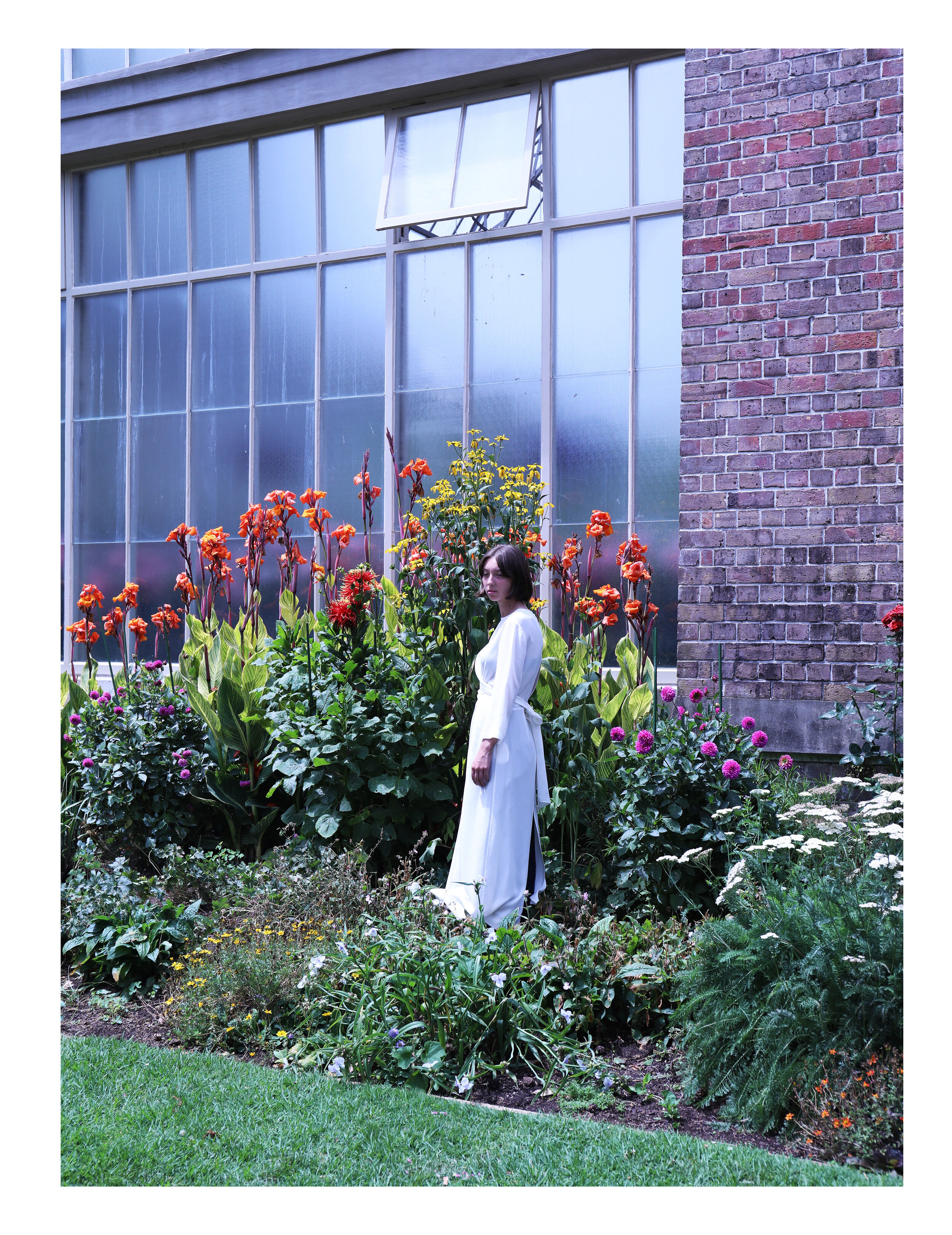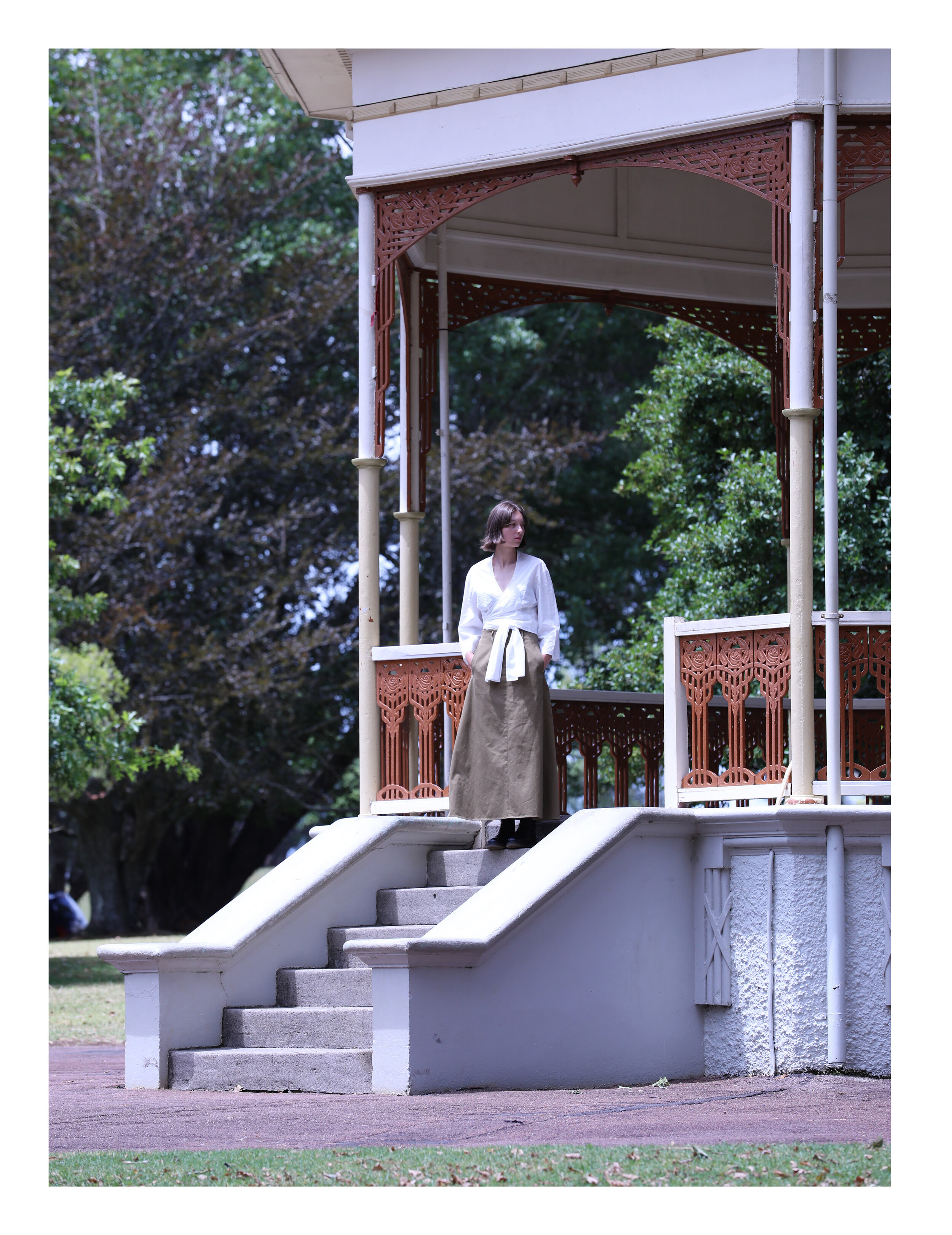Kate Megaw of Penny Sage
originally published in her. magazine volume 10
Photography _ James Oliver
Styling _ Mari Kishi
Model _ Ella
Design _ Hiroko Kobayashi
pennysage.com
a conversation with Kate Megaw
Writer_ James Oliver
Having launched Penny Sage in 2011, Kate Megaw has developed her line into a household name. Focusing on high standards of manufacturing and attention to detail, each garment oozes quality. I paid a visit to the home of the Penny Sage label to catch up with Megaw and take a look at the upcoming collection
First of all, can you please talk about your background and what was the catalyst for becoming a fashion designer?
I grew up in the countryside near the Rangitikei River (Central North Island, New Zealand). My mum taught me how to sew at a young age, so growing up, I spent a lot of time making my own clothes. I left high school early to study fashion design and I decided in my first year of university that I was going to create clothing for a living. I'm obsessed with making clothes and always have been! I daydream about shapes, colours and ways of putting a garment together.
Furthermore, what was the catalyst for starting Penny Sage?
After working for a number of years in the fashion industry, I decided to venture out on my own project and start my label. I had a strong vision for what I wanted to create and knew how I wanted my fashion business to be run.
Can you please talk about why the label is called Penny Sage?
Growing up I wished my name was Penny, and Sage is my mum's family name so the personal connection to the name is very special to me and not using my own name for the label has given me a lot of freedom when designing. I imagine Penny Sage as a separate person to me - a different character for each season.
Each garment is made locally in New Zealand, either in Auckland or Hamilton; can you talk about the importance of this and what it means to you to work with these artisans?
The local suppliers and makers are my community. I am so grateful to work with such passionate and talented people who impart their time, energy and skills into creating our garments. It's really important to me as a designer and business owner to know every person who is making our clothing. It is fundamental to Penny Sage as a label. Everyone I work with takes pride in what they do. It's such a special industry and I really care for it.
Can you please talk a bit about the concept of the label and how the label has grown and evolved since the early days?
I started Penny Sage with a small start-up grant in 2011 and ran it solo for a number of years. In 2018, I hired my first employee to help with the day-to-day running of the business and as of 2020, we are now a team of five! I've never wanted a fashion empire and have been very cautious of growth as a business. I've always made pieces that my friends and I love to wear so I think Penny Sage has evolved naturally because of that love and support from friends and family. I strive for Penny Sage clothing to be well-made, flattering on different body types, classic with a twist, and above all, to bring joy to myself, my team, our makers and our customers.
Can we talk about sustainability for a moment; is this something you consider in your work? What are your overall thoughts on the word?
We produce garments that we completely believe in -- pieces that we want to wear for years to come, that we feel deserve to be in the world. We consider all of the materials that we use very carefully and incorporate deadstock materials into our collections to reduce waste. Most of the fabrics we use are made of natural compositions so they breakdown at the end of their long life as a garment. We make sure the people who make our garments are compensated fairly for their work and personally manage the waste from the production of our garments. We are always looking for ways to reduce our waste and improve what we do with every resource.
In terms of sustainability, we prefer to show rather than tell, and don't feel a need to profit from greenwashing. Our products are made with care from start to finish so we hope that the design and craftsmanship will speak for themselves.
How important is the overseas market for you; is there a conscious effort to build and grow the label outside of New Zealand?
We slowed down exporting overseas in 2019 as we felt we were making products that were really resonating with people in the southern hemisphere. International export is something we would love to revisit when the timing is right and when we are able to responsibly manage the increase of our environmental footprint.
Can you go into a bit of detail about the new collection that is coming out this spring (your autumn); what are the key elements of the collection and what stands out in your opinion?
Ray AW20 is a deep dive into our pattern archive and features many of our most loved styles, refreshed and adapted for the southern hemisphere wintertime. The colours are a wild mix of romantic royal purples and bold bright reds, alongside classic navy plaid and soft muted stripe organza. I'm excited most about the Ray dress and a new silhouette for the season called the Ray skirt. It features knife pleats, fits closely at the waist and kicks out at the hem. I think it's going to be really fun to wear. There are many special details that I love in this collection -- little frosted ball buttons, subtle topstitching but in a neon thread and dyed green shell buttons.
Finally, going forward, what do you want to achieve with Penny Sage?
For my team and Ito keep learning and challenging ourselves within our craft so our product and the brand keeps evolving. That way, we will be fulfilled and excited in our roles. I want to achieve better internal environmental initiatives within our business and long term, I want to create a buy-back incentive and to grow my own yarn for New Zealand-made knitwear.









